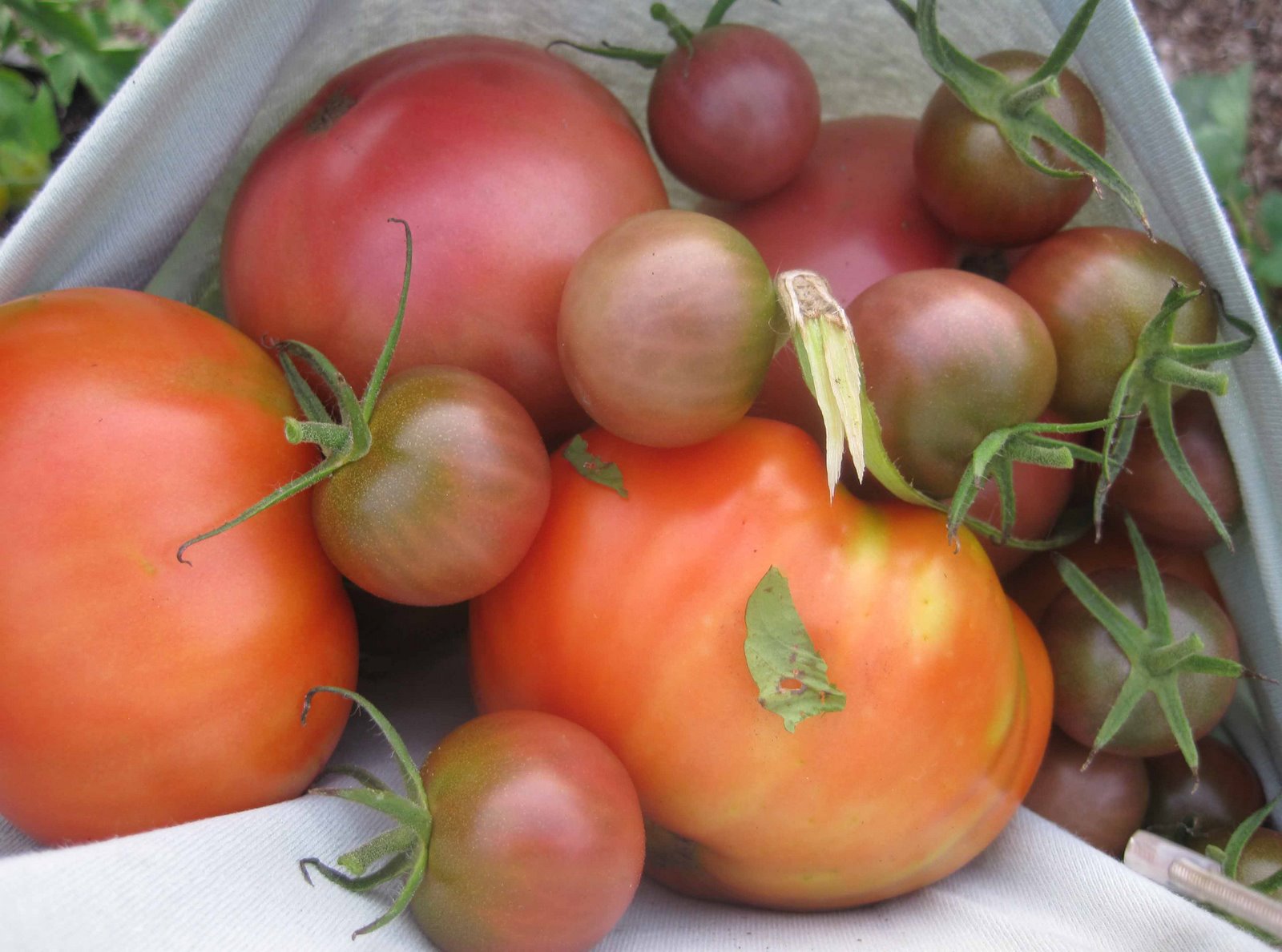
Shall we harken back to 1926 for some tomato-growing advice?
Why not? After all, I’ve already tried, with pretty good success, growing lettuce like it’s 1957.
And I’m attempting to get my poinsettia to re-bloom following advice from 1932.
Not to mention I am taking to heart some great general gardening advice from 1935, which in a nutshell is “never take your garden too seriously.”
Anyway, tomatoes.
I’ve been reading through The Little Kitchen Garden by Dorothy Giles, published in 1926, and came across some advice about growing tomatoes. (She’s my next Lost Lady of Garden Writing over on my Substack Newsletter.)
And I quote.
“Rule One for all kitchen gardeners: Set your plants deep. This is especially important in raising fine tomatoes. They must develop a root growth from the stem to help it to uphold the wide branches with their heavy fruit clusters. No matter how small the tomato plants seem at the time of setting out, they should be planted low. Two inches of stem below the surface of the ground are worth three inches above.”
Of course, even without reading this advice, I’ve been following it. We all know to plant tomatoes deep.
But then she wrote,
“In our garden we favor three varieties of tomato, each one for a virtue all its own. Earliana, because this variety really does run true to name and comes into bearing a little in advance of the others; Bonny Best, for its non-acid quality, which makes it permissible to persons who have a gouty tendency and would otherwise be denied this luscious fruit; and Livingston’s Stone, a firm round, meaty tomato of fair size, the best for canning.”
After reading that, I am tempted to grow just those three varieties as she suggests, and yes, I did find seeds for them for sale online. But really, wouldn’t any three varieties, well-chosen for their purpose, be in the spirit of her suggestion? I’d say yes, but here is where I start to have a little trouble.
I start every January, convincing myself that I will grow fewer tomato varieties and enjoy them more this year. One cherry, one slicer, one meaty one for salsa. But which slicer? Which cherry? Which meaty one? So many choices. I listed all my seeds on a spreadsheet the other day, and I currently have 11 varieties of tomatoes on the list. They include Beefsteak, Sandwich Slicer Hybrid, Super Beefsteak, which I bought when I was buying seeds on sale a few weeks ago. Those are my slicers. Then I bought Roma VF because I need a good tomato for salsa. It will by my “meaty tomato.” Then I added Mr. Stripey because it is pretty and might have a lower acidity. Good for those with “gouty tendency.”
I also bought Black Cherry, Cherry Baby Hybrid, and Yellow Pear because one does like a colorful mix of cherry tomatoes, doesn’t one? Even if they weren’t mentioned in a book from 1926! Finally, while sorting through my old seeds, I found I still had seeds for Blue Beech, Midnight Snack, and Purple Zebra from last year, and they were good, so I should grow them again.
And that’s how I ended up with 11 varieties instead of three.
I know my garden and how big (or small) it is and I have space and stakes for 13 tomato plants. So now that I’ve totally blown the three varieties suggested in 1926 by Giles, maybe I should just go ahead and get seeds for the ones she suggested and buy some more stakes.
And then I remembered that I also need seeds for currant tomatoes, which I grow for my sister, who shares them with her grandkids. And I really should grow German Johnson again…
Anyway, more advice from 1926!
“In the small garden there is no excuse for tomatoes being allowed to trail over the ground, unstaked and unpruned.”
I heartily agree and already follow this advice to stake tomatoes. That’s how I was taught to support tomatoes!
One last piece of advice from Giles…
“And thirty-six vines are not too many for even the busy woman who waits on her own garden to stake adequately and trim judiciously.”
Leaving aside the number of vines to grow—I promise maybe I won’t grow that many—I am already following her advice to plant deep and stake and prune my tomatoes. I guess it would be okay to skip the advice about three varieties, but that reminds me that my list of varieties doesn’t include an early tomato variety…
Anyway, there’s your advice for growing tomatoes like its 1926! (And yes, I think I might as well grow Earliana, Bonny Best, and Livingston Stone, just to see how they look and taste.)
If your neighbors don’t think you’re a little crazy, you need to up your gardening game.


Gouty tendency! lol, I luckily don’t have that tendency, but I do love the non-acidic ones for slicing, salt & peppering and eating still warm from the sun.
I do plant deep, but somehow don’t follow through with as much pruning and staking as I should. Maybe this year. I’ll go read your advice.